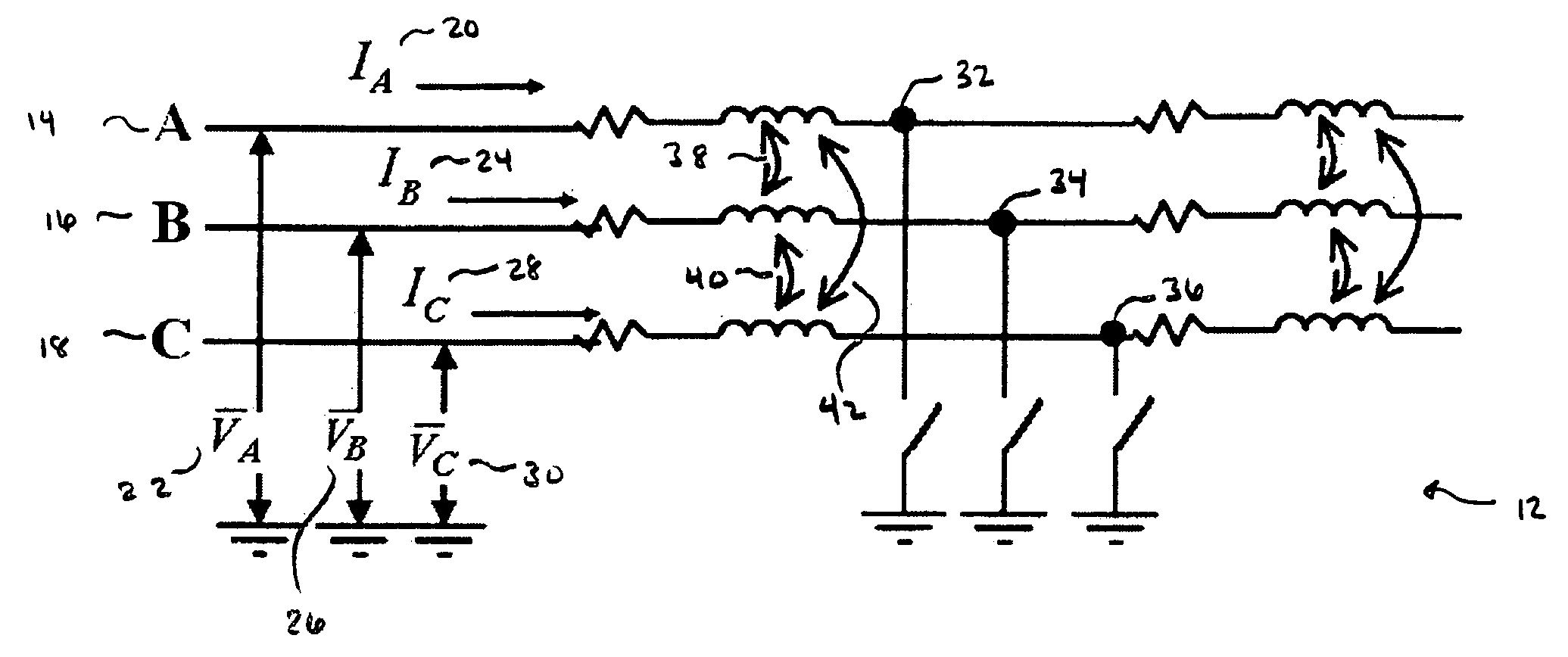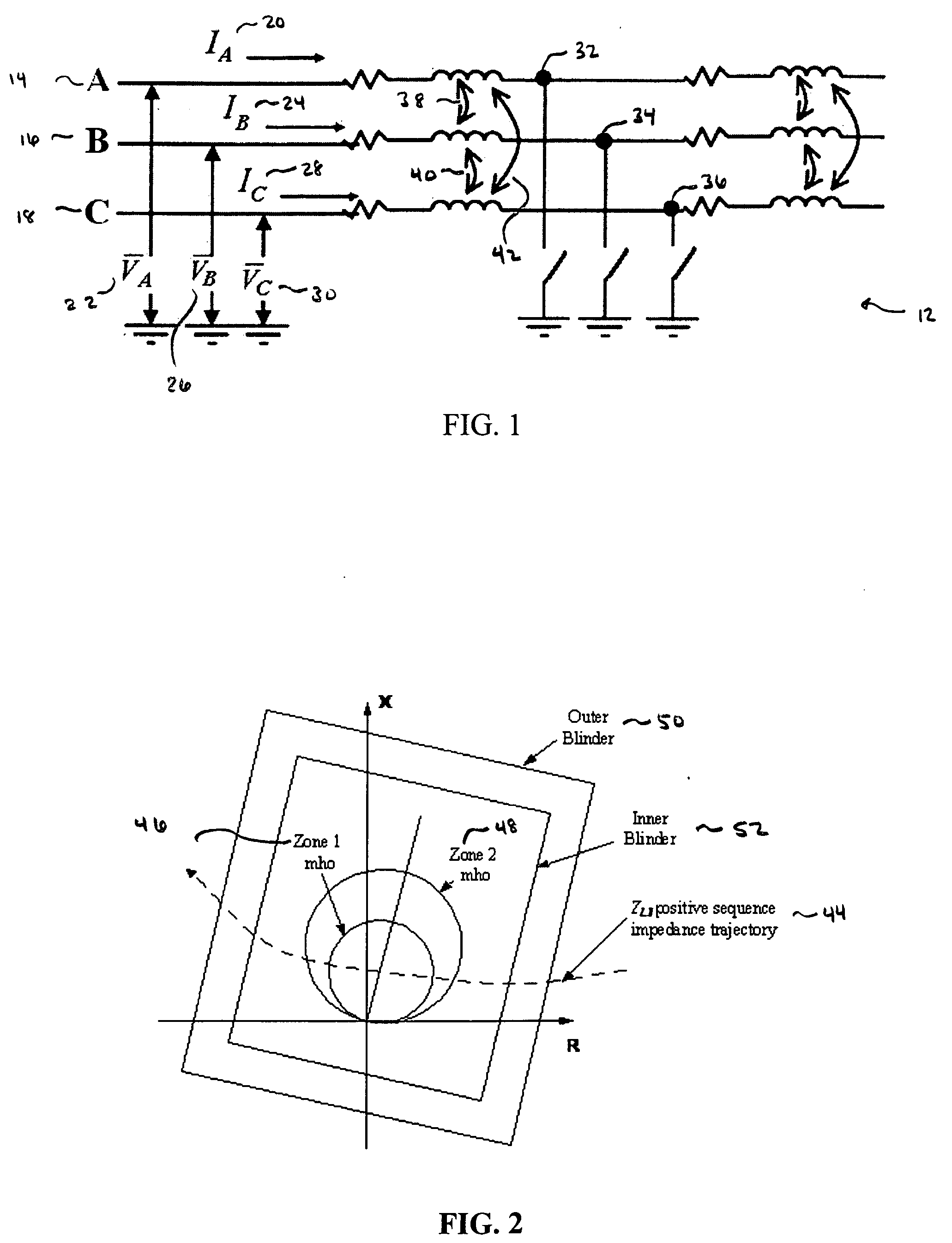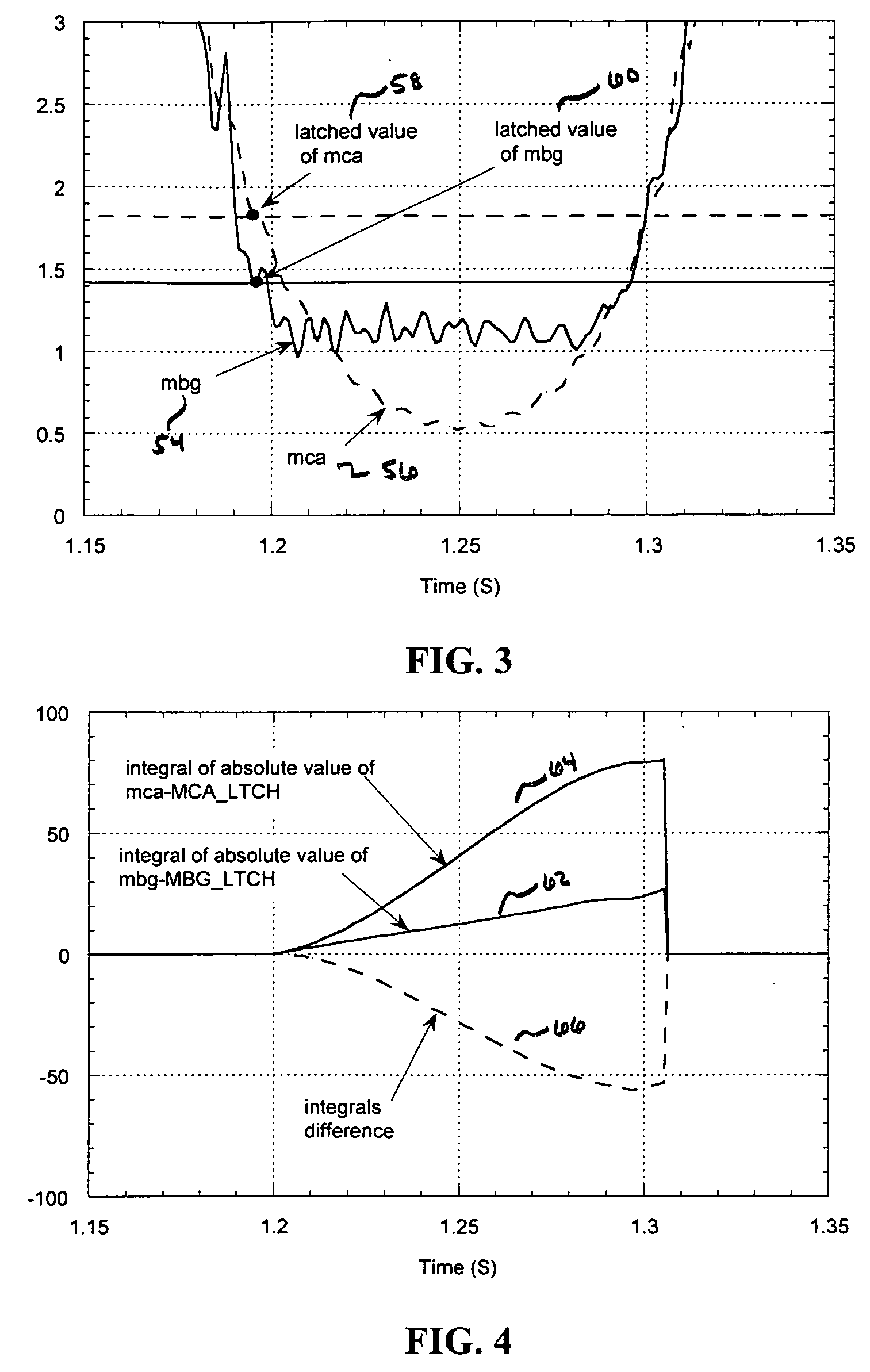System for maintaining fault-type selection during an out-of-step condition
- Summary
- Abstract
- Description
- Claims
- Application Information
AI Technical Summary
Benefits of technology
Problems solved by technology
Method used
Image
Examples
first embodiment
[0048] A first embodiment system is contemplated for maintaining proper fault type selection during an out-of-step condition. During out-of step conditions, the apparent impedance (Zap) as provided by each of the six impedance loops travels in the complex plane at a rate dependent on the out-of-step characteristics. This apparent impedance (Zap) value is represented by Equation 5 as discussed in more detail above. In this case, if a fault occurs during the out-of-step condition, the corresponding apparent trajectory becomes still in the complex plane. The rate of change of the apparent impedance is monitored, and the faulted impedance loop having the least rate of change is isolated. The derivative of the calculated distance m traveled by the impedance in a complex plane is then computed to distinguish between single-phase-to-ground faults and double-phase-to-ground faults. This m trajectory may also be referred to as a fault distance trajectory. Nevertheless, it is important to not...
second embodiment
[0049] A second embodiment using an integrator is further contemplated as shown in FIGS. 3 through 5. FIG. 3 illustrates the m values for a phase B-to-ground fault loop and a phase C-to-A loop during an out-of-step situation. The corresponding m value for the phase B-to-ground fault loop is designated by mbg 54. As illustrated by FIG. 3, during out-of-step situations, mbg 54 settles to a generally constant value to which a small noise component could be included. The corresponding m value for the phase C-to-A loop is as designated by mca 56. As illustrated by FIG. 3, during out-of-step situations, mca 56 keeps moving and will cause either the zone 1 or zone 2 mho elements to pick up during a single-phase-to-ground fault.
[0050] The characteristics of the m values as illustrated in FIG. 3 may be further utilized to eliminate the amplification of noise as discussed with the first embodiment. Theoretically, the m trajectory corresponding to the faulted loop should ideally settle to a co...
PUM
 Login to View More
Login to View More Abstract
Description
Claims
Application Information
 Login to View More
Login to View More - R&D
- Intellectual Property
- Life Sciences
- Materials
- Tech Scout
- Unparalleled Data Quality
- Higher Quality Content
- 60% Fewer Hallucinations
Browse by: Latest US Patents, China's latest patents, Technical Efficacy Thesaurus, Application Domain, Technology Topic, Popular Technical Reports.
© 2025 PatSnap. All rights reserved.Legal|Privacy policy|Modern Slavery Act Transparency Statement|Sitemap|About US| Contact US: help@patsnap.com



